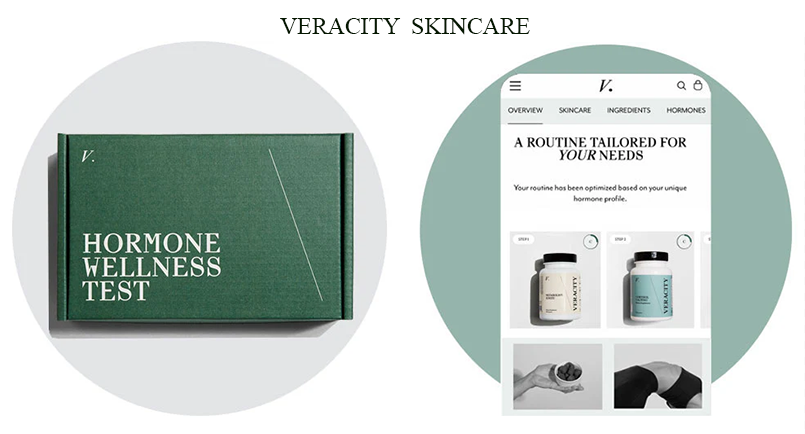
Acne is acne, right? Not exactly. While all acne might look similar on the surface, hormonal acne and regular acne have different triggers, and knowing the difference can help you manage breakouts more effectively. If you’re struggling with breakouts that seem to have a life of their own, it might be time to figure out if hormones are the hidden culprit.
Contents
What is Regular Acne?
Regular acne, also known as common or “non-hormonal” acne, typically arises from blocked pores, excess oil production, and bacteria. It can affect people of all ages and is often linked to factors like poor skincare habits, diet, and environmental factors.
Causes of Regular Acne
Regular acne is usually triggered by external factors and often affects areas where oil glands are most active, like the face, neck, chest, and back. Here are some common causes:
- Clogged Pores: Dead skin cells, oil, and impurities can clog pores, leading to blackheads, whiteheads, and pimples.
- Excess Oil Production: Overactive oil glands can produce too much sebum, which combines with dead skin cells to form acne.
- Bacteria: Propionibacterium acnes (P. acnes) bacteria can thrive in clogged pores, causing inflammation and pustules.
- Poor Skincare Habits: Not cleansing properly, over-exfoliating, or using comedogenic products can exacerbate acne.
Characteristics of Regular Acne
Regular acne often includes blackheads, whiteheads, pustules, and occasional cysts. It may not follow a predictable pattern, and breakouts can pop up randomly, depending on factors like diet, stress, and skincare routines.
What is Hormonal Acne?
Hormonal acne, as the name suggests, is tied to fluctuations in hormones. It’s especially common during puberty, menstrual cycles, pregnancy, and menopause. Hormonal acne is often deeper and more painful than regular acne, and it typically appears in specific areas.
Hormones and Skin: The Connection
Hormones like estrogen, progesterone, and testosterone influence oil production and skin cell turnover. When these hormones shift, they can cause oil glands to go into overdrive, leading to clogged pores and inflammation. Here’s how hormonal fluctuations can trigger breakouts:
- Testosterone: Increases oil production, which can lead to clogged pores and acne.
- Estrogen and Progesterone: Fluctuations in these hormones, especially during the menstrual cycle, can affect skin hydration and oil levels, leading to hormonal breakouts.
Characteristics of Hormonal Acne
Hormonal acne usually appears as cystic, painful bumps along the jawline, chin, and lower face. These breakouts often flare up in sync with menstrual cycles or other hormonal changes, following a more predictable pattern compared to regular acne.
How to Tell if Your Acne is Hormonal or Regular
Determining the type of acne you’re dealing with can help you choose the right treatment. Here are some key differences between hormonal and regular acne to help you identify which one you might be facing.
Location of Breakouts
Hormonal Acne: Primarily affects the lower face, especially the jawline, chin, and neck area. This pattern is due to hormone-sensitive areas that produce more oil in response to hormonal shifts.
Regular Acne: Can appear anywhere but is most common on the T-zone (forehead, nose, and chin) and can also affect the chest and back.
Timing and Flare-Ups
Hormonal Acne: Tends to follow a monthly pattern, often worsening during certain points in the menstrual cycle, pregnancy, or menopause.
Regular Acne: Doesn’t follow a specific timing and can appear randomly, often triggered by lifestyle factors like diet, stress, or skincare habits.
Type of Acne Lesions
Hormonal Acne: Usually cystic or nodular, resulting in deeper, painful bumps that don’t have a “head.” These cysts can last longer and are prone to leaving scars if not treated correctly.
Regular Acne: Can include a mix of blackheads, whiteheads, papules, pustules, and occasional cysts. The lesions tend to be smaller and more surface-level compared to hormonal acne.
Managing Regular Acne
For regular acne, the goal is to keep pores clear, control oil, and reduce bacteria. Here are some tips and products that can help manage common acne.
Use a Salicylic Acid Cleanser
Salicylic acid is an oil-soluble exfoliant that penetrates the pores, helping to remove dead skin cells and excess oil. Using a cleanser with salicylic acid can help prevent blackheads and whiteheads from forming.
Apply Benzoyl Peroxide for Bacterial Control
Benzoyl peroxide is effective at killing acne-causing bacteria and reducing inflammation. Apply a small amount to affected areas once or twice a day, but be cautious, as it can be drying.
Exfoliate Regularly (But Don’t Overdo It)
Exfoliating helps remove dead skin cells that can clog pores, but over-exfoliating can irritate the skin and make acne worse. Stick to gentle exfoliants, like AHAs or BHAs, and limit exfoliation to a couple of times per week.
Non-Comedogenic Products Only
Check that your skincare and makeup products are labeled “non-comedogenic,” meaning they won’t clog your pores. Clogged pores are a major factor in regular acne, so this step is essential for keeping your skin clear.
Managing Hormonal Acne
Hormonal acne can be more challenging to treat because it’s influenced by internal factors. Here’s what you can do to help manage and reduce hormonal breakouts.
Consider Hormonal Therapy
If hormonal acne is severe, you may want to talk to your doctor about options like birth control pills or spironolactone, which can regulate hormone levels and reduce acne. These options can help balance hormone levels but require a prescription and medical supervision.
Try Products with Alpha Hydroxy Acids (AHAs)
AHAs like glycolic acid can help remove dead skin cells and reduce clogged pores. These acids are gentle exfoliants that encourage cell turnover and can make skin less prone to cystic breakouts.
Maintain a Low-Sugar Diet
High sugar levels can spike insulin, which can lead to increased oil production and hormonal fluctuations. A diet lower in refined sugars can help reduce hormonal acne flare-ups over time.
Use a Retinoid Cream
Retinoids can help prevent pores from clogging and improve cell turnover, which is beneficial for both regular and hormonal acne. Start with a lower strength to let your skin adjust, as retinoids can initially cause irritation.
When to See a Dermatologist
For both hormonal and regular acne, if your skin isn’t responding to over-the-counter treatments or if the acne is affecting your confidence, it may be time to see a dermatologist. They can provide a personalized treatment plan, prescribe stronger medications, and help prevent long-term scarring.
Understanding whether you’re dealing with hormonal or regular acne is the first step toward finding an effective treatment. By knowing the differences, you can take targeted steps to calm your skin, reduce breakouts, and keep both types of acne in check. With the right approach, clear, healthy skin can be within reach.

